After spending about 3 hours at River Safari, my friend and I walked over to Singapore Zoo next door.
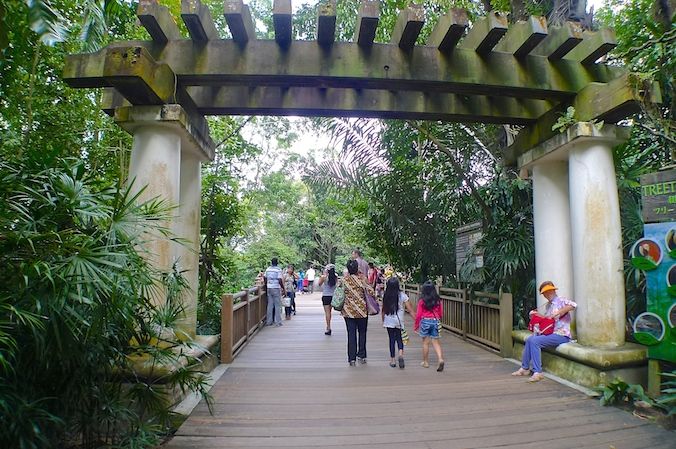
We saw a couple of mousedeers while crossing the bridge.
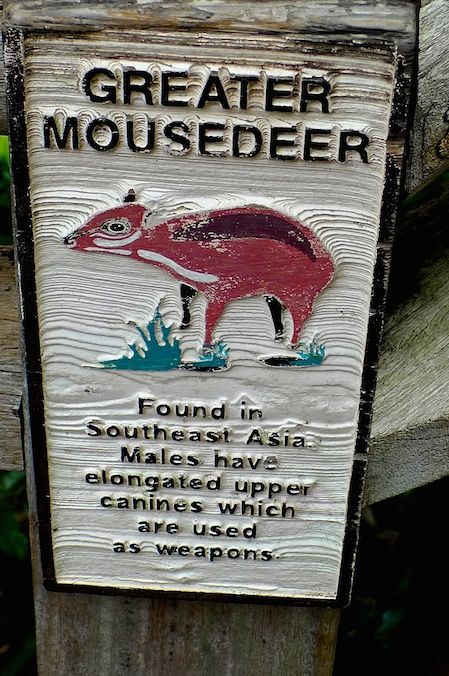

Then we saw a crocodile.
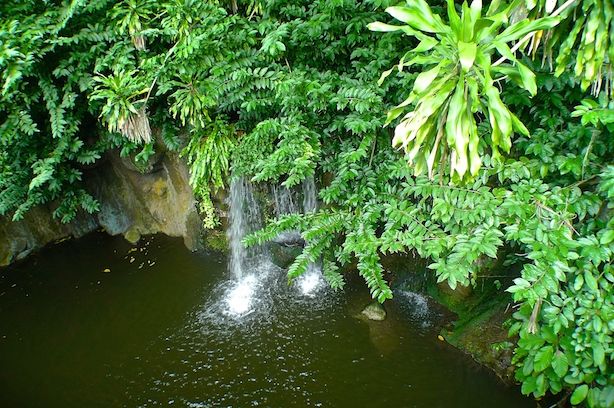
Or to be more exact, a false gharial.
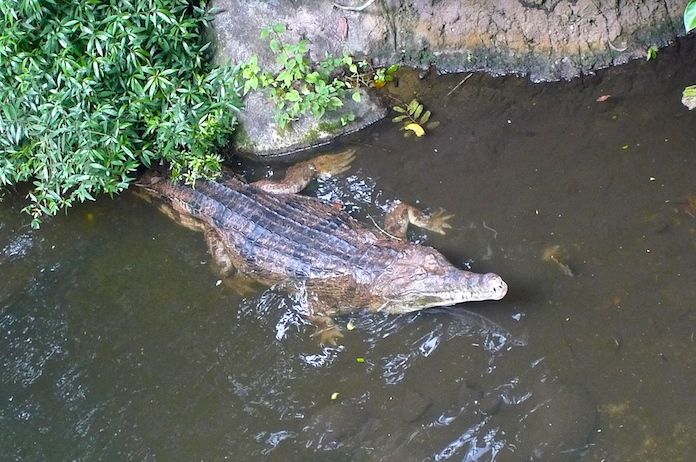
False gharial is believed to have been in existence for the last 65 million years. Found in freshwater rivers and swamps of Thailand, Malaysia and Indonesia, they have long slender snouts adapted for catching fish. Their diet include small mammals, birds and frogs. Unfortunately, false gharial is now classified as endangered as a result of dam construction, land clearance and water pollution.
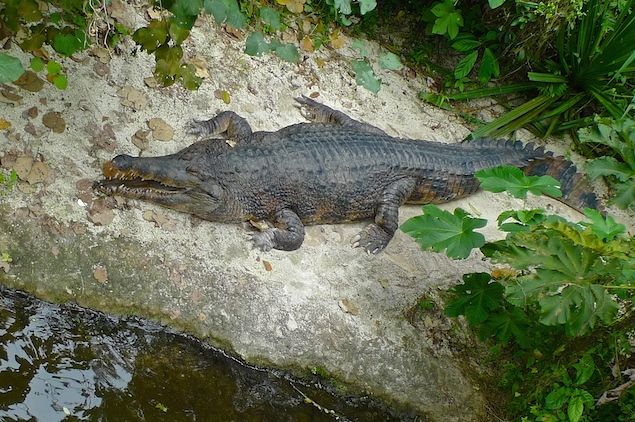
As we walked further in, we saw this interesting and cute direction sign post.

I really like this direction post! There's an animal head on each so there is no problem finding your direction even if you do not know how to read! LOL.

Somehow I did not get to see proboscis monkeys this time, so I guess these fake ones will do. Haha!
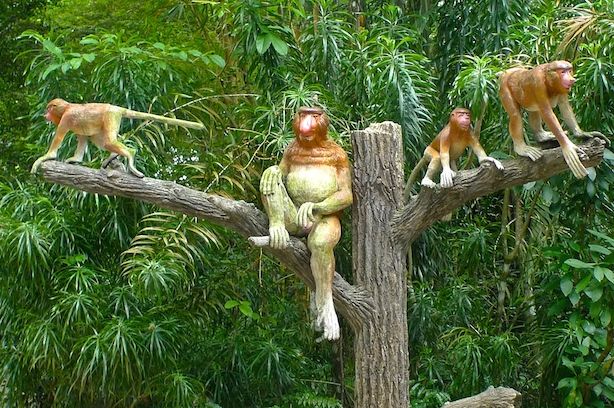
A flock of flamingos.

We reached the Frozen Tundra to see the Polar Bear.
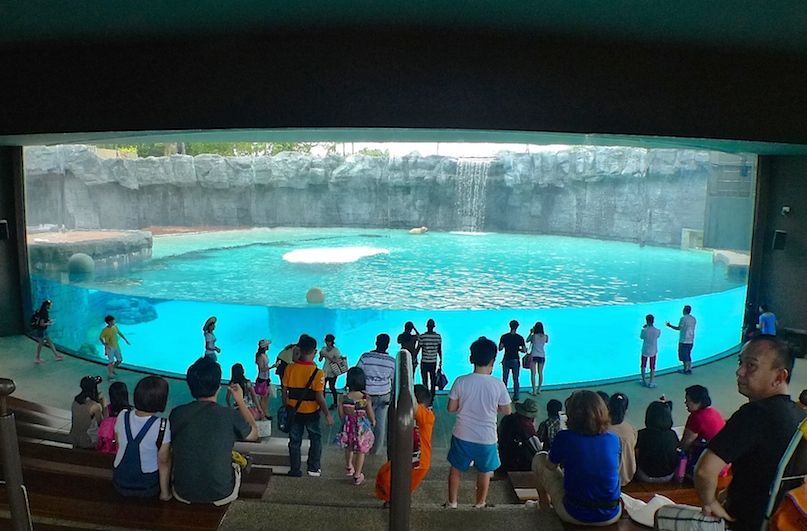
The Polar Bear was resting.
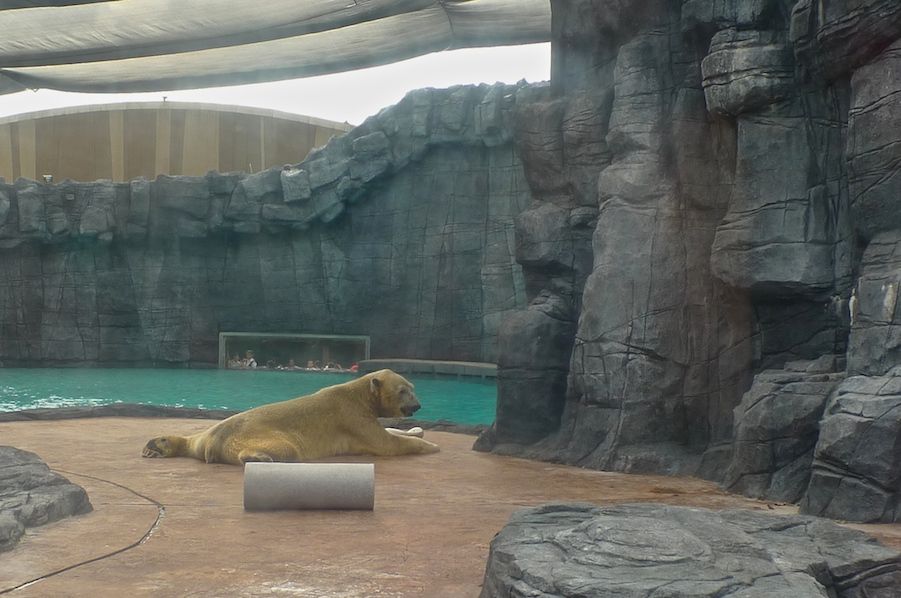
And then it went dipping in the pool so I took a photo of it underwater.
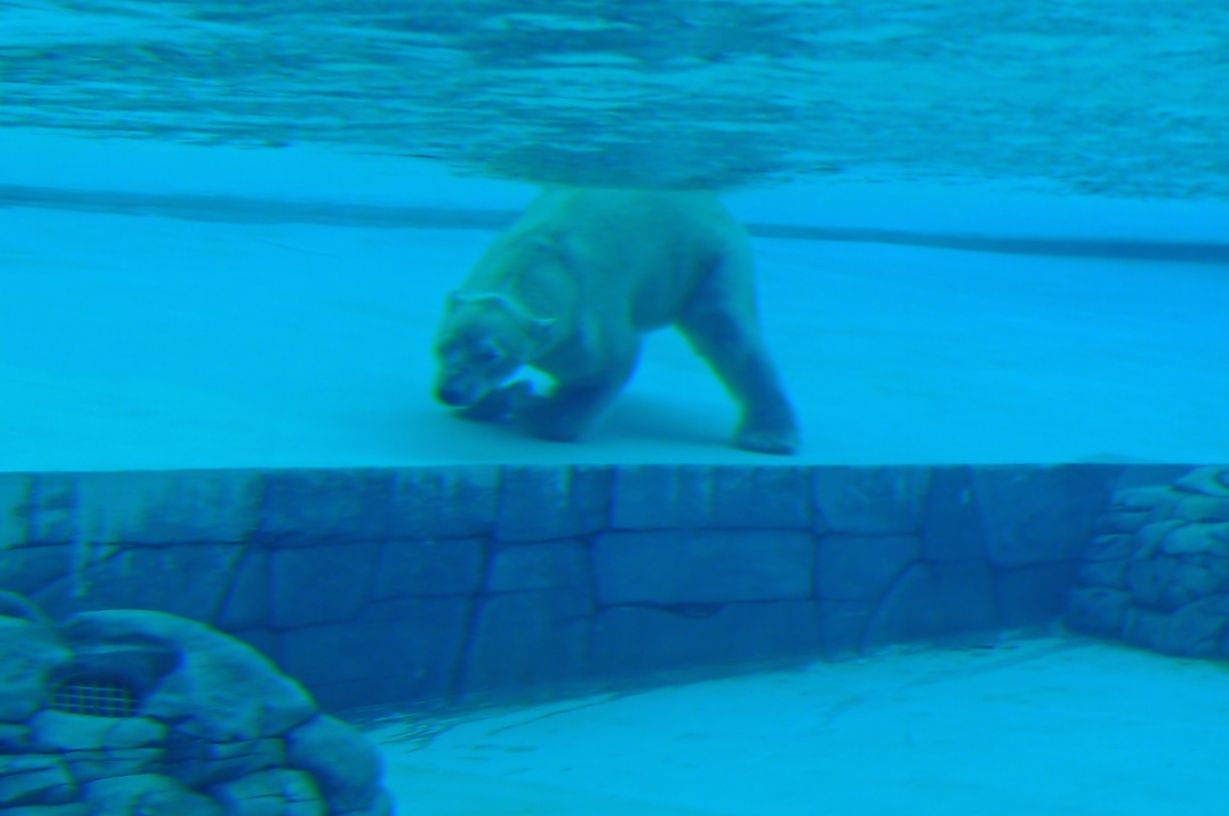
We then reached the free roaming Orang Utan Boardwalk.
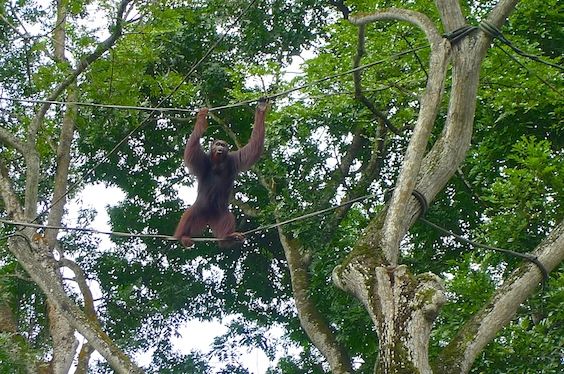
We could see orangutans climbing the trees and ropes above us.

We were in luck as it was feeding time for the orangutans.
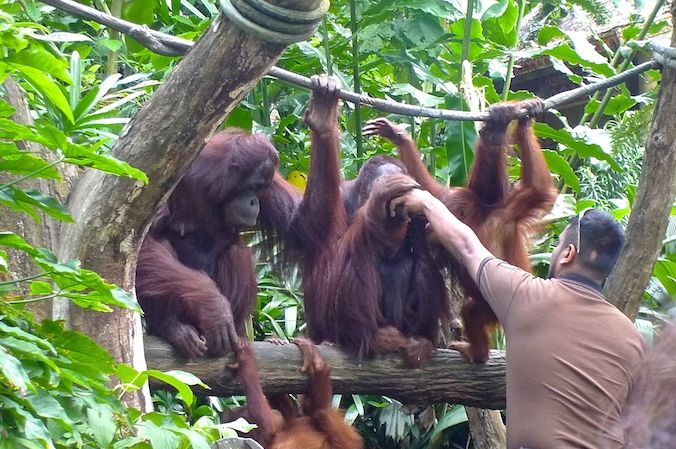
Took a few photos of them feeding.
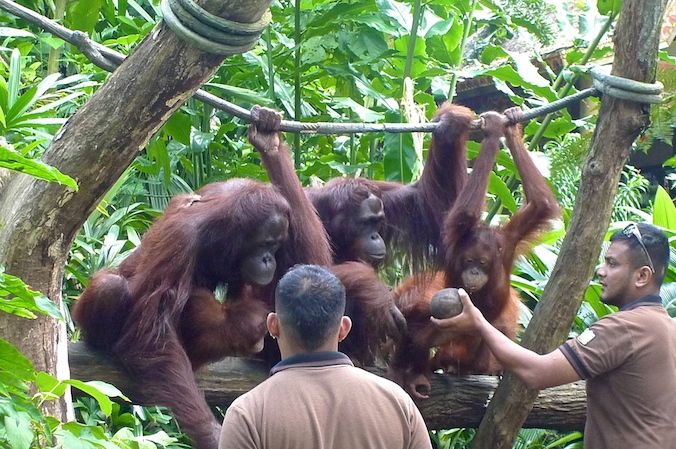
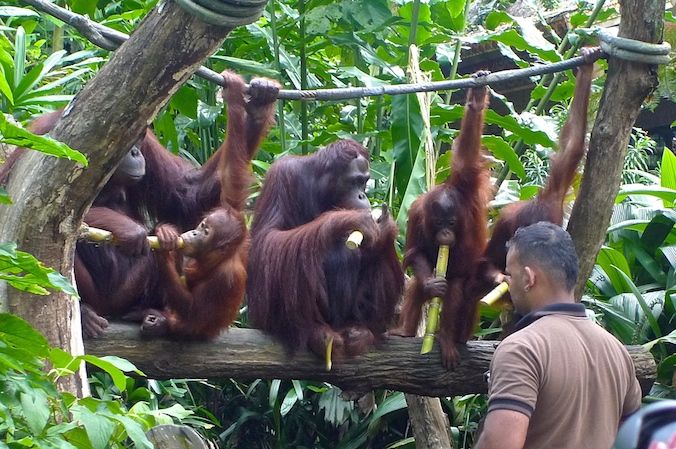
I passed by this very picturesque area and just had to snap a photo!
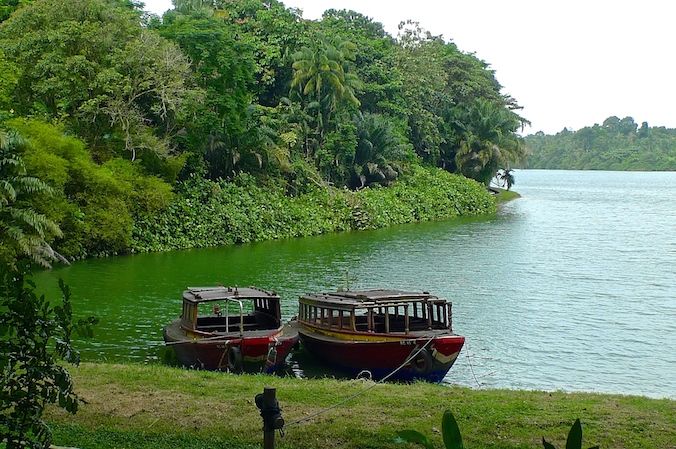
Then we hurried over to the Elephants Of Asia to catch the live show. There are live shows at specific times of the day.
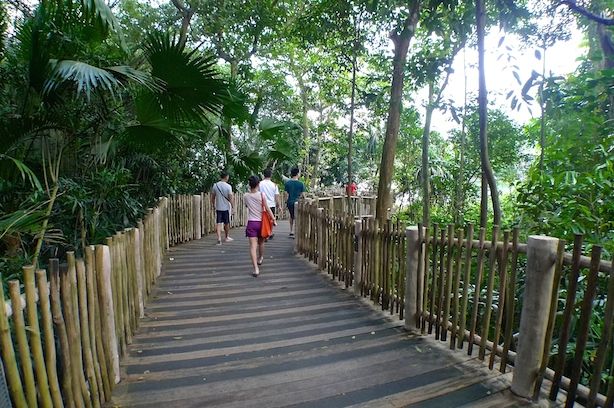
Unfortunately, we were a bit late.

And there were no more room for us to get a good view. Oh well, we just had to make do by watching from afar.
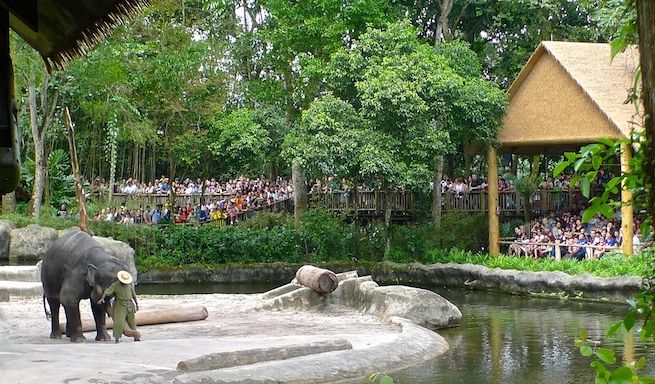
I had watched the show before during my last trip to Singapore Zoo so I was not too disappointed at not being able to watch it properly this time.
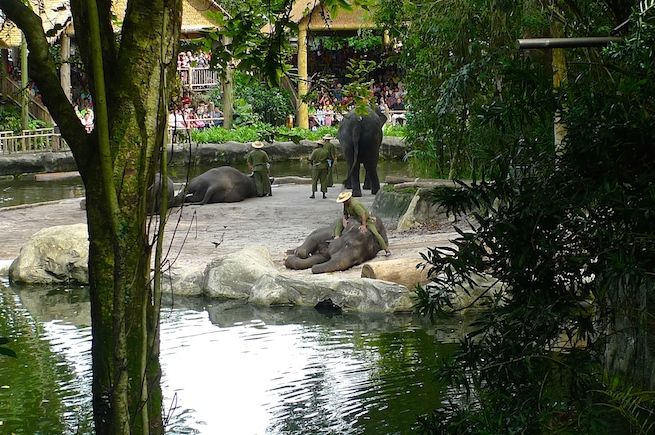
A good view of the river as we left the Elephant show so I took a snap of it.
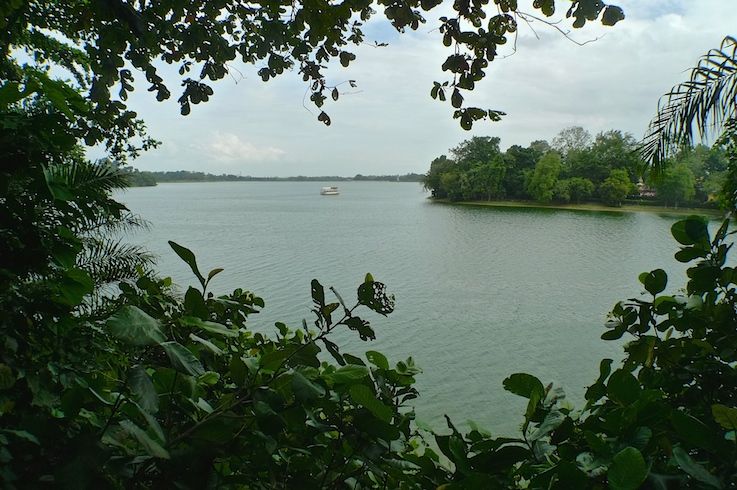
Next, we ended up at the Hamadryas Baboons at The Great Rift Valley Of Ethopia.
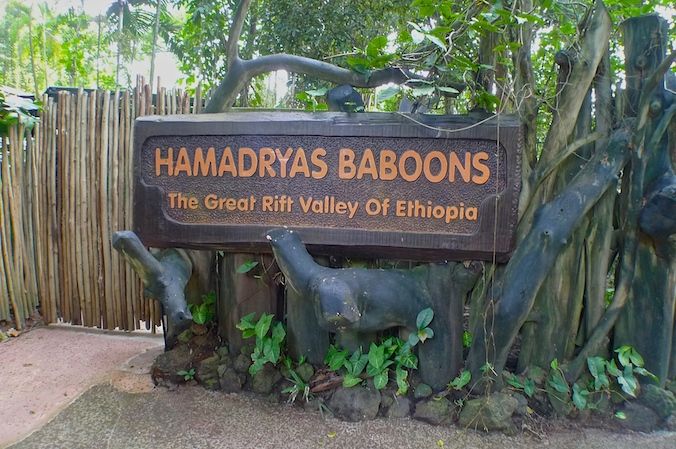
Nice waterfall with the baboons on the opposite side of the stream.
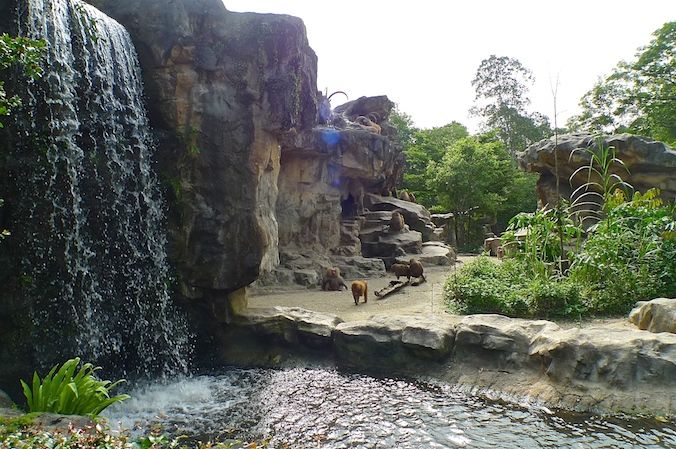
The baboons
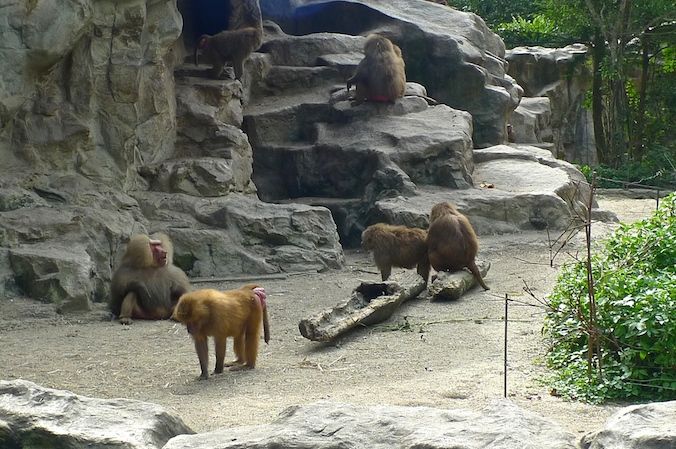
It seems that the male baboon completely dominate the females. Where he leads, they must follow.
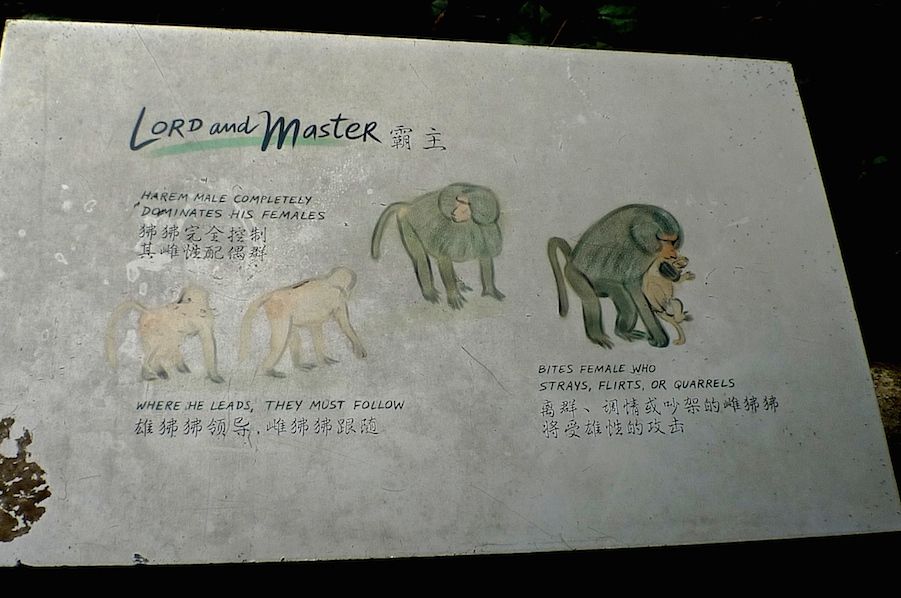
We also got to see a few Nubian Ibex at the top of the cliff. Nubian Ibex are desert-dwelling goat species normally found in Saudi Arabia and Egypt.
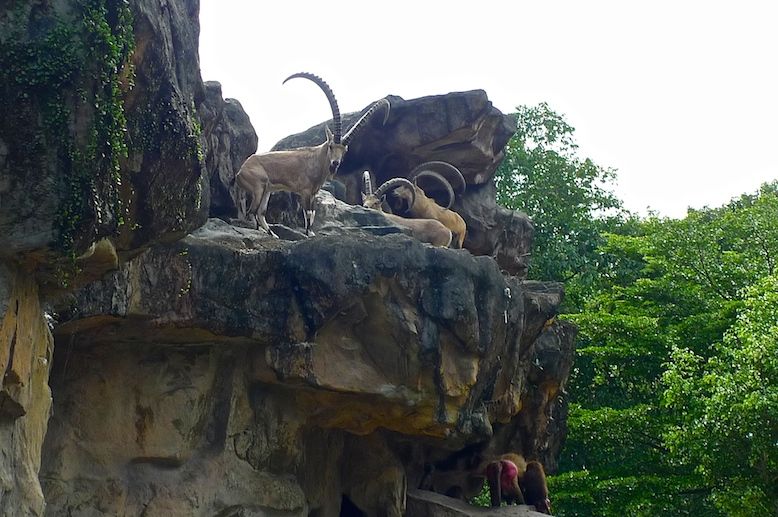
Walking around the Great Rift Valley Of Ethopia, we found some cool structures.
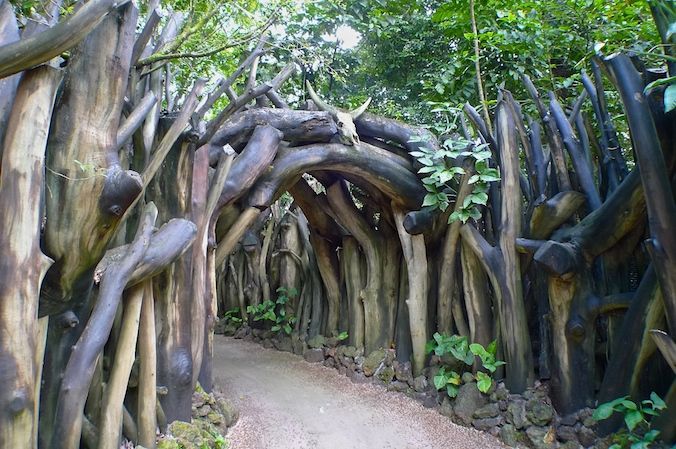
I like this one! Although it does look a like a gate to the Valley of the Dead. LOL.
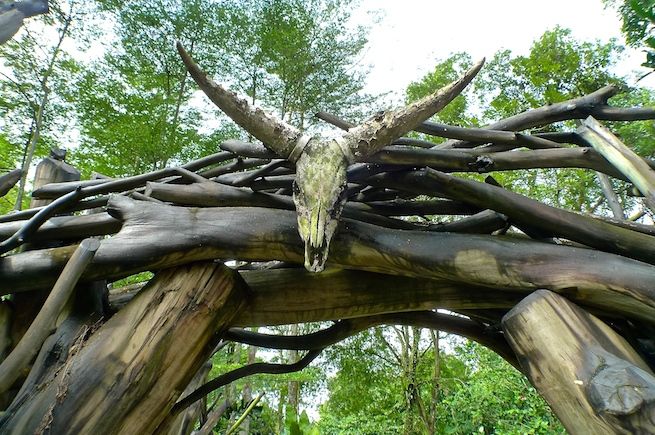
These totem poles also lent an air of mystery and mysticism to the area.
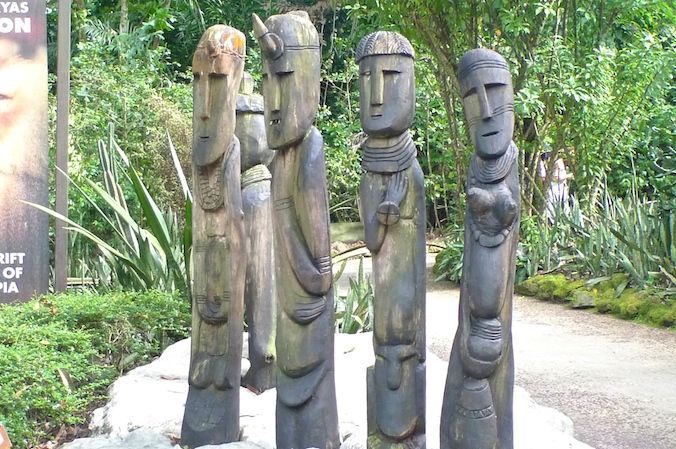

Why did I take this photo? No idea! I just love the view of this very tall tree from below.
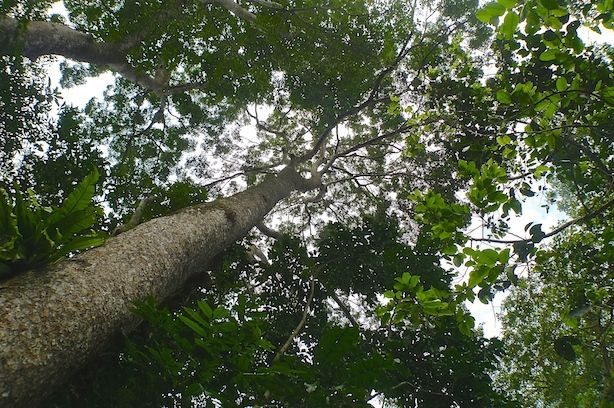
Once we were out of the Great Rift Valley Of Ethopia, we walked towards the Australian Outback.
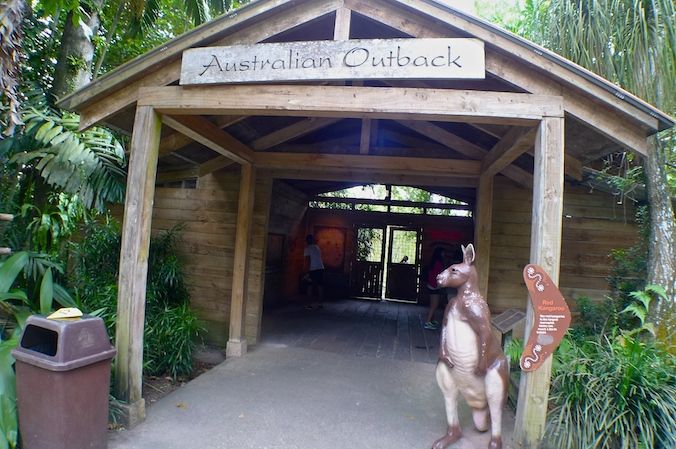
Saw some kangaroos, but it was difficult to take pictures of them as they were constantly moving around.
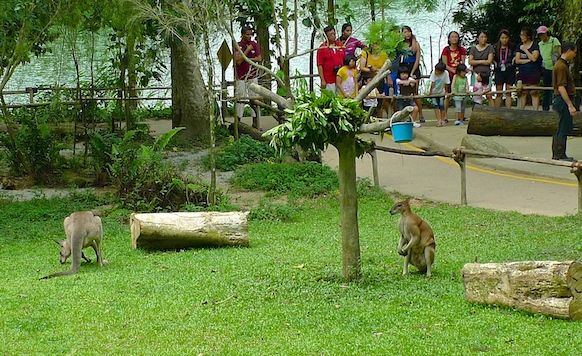
Then we reached a stream and saw two white tigers chasing after a red ball!

Did you know that only 1 in 10,000 tigers is white? A white tiger is actually a Bengal tiger with a very unusual set of genes. White tigers have white fur, brown stripes, and blue or green eyes. They also have pink noses and pink paw pads. All of today's white tigers are descended from a tiger named Mohan. However, they are not albinos because they do have color pigmentation.

Not sure why there is a sculpture of an elephant here but I took a picture of it as it's very artistic and colorful!
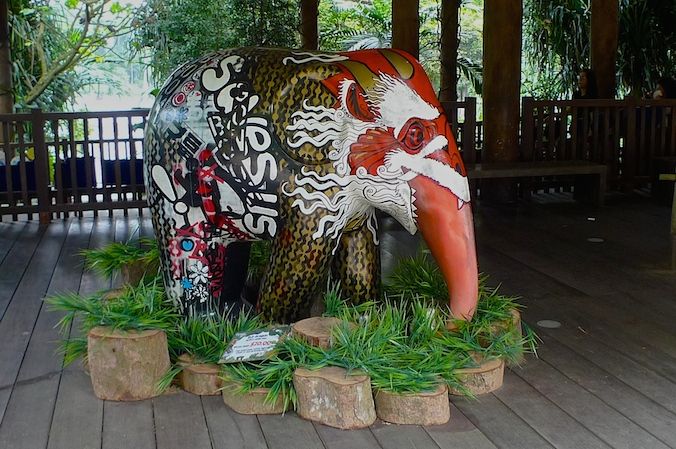
Next, we stopped to look at the babirusa.
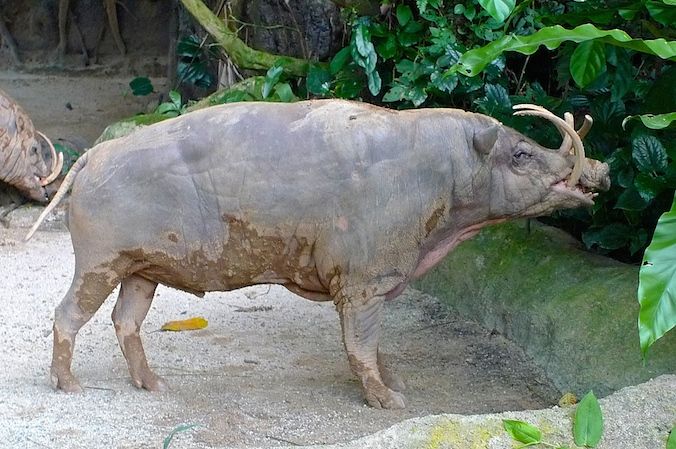
Babirusa (or pig-deer) has upper tusks that pierce the flesh and grow through the top of its snout. The tusks look like antlers of a deer, thus the name pig-deer. No other wild pig has this unique feature.
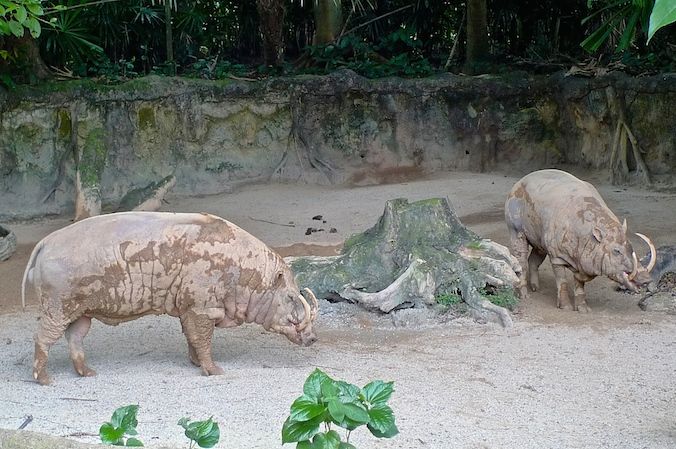
I saw this babirusa scratching its itchy torso against the tree. LOL!
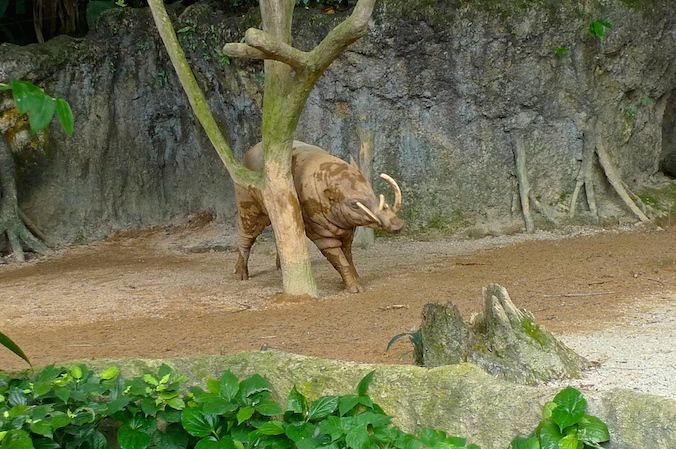
I like the fact that all the animals in Singapore Zoo are never kept inside cages. The zoo is very well designed and managed and I believe the animals are happy.
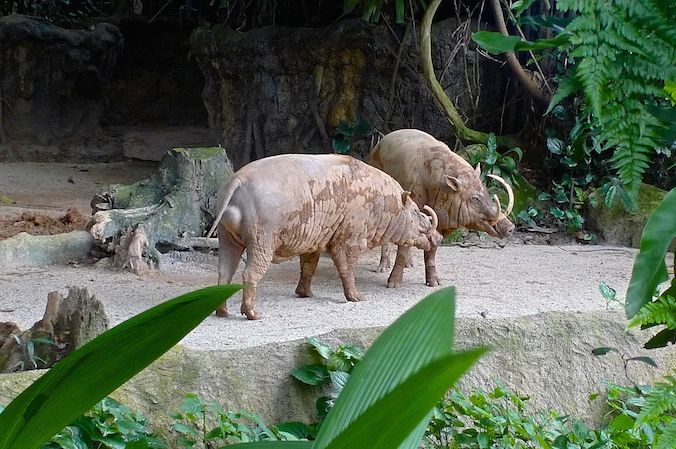
Nearby the babirusa, is home to the Malayan tapirs.
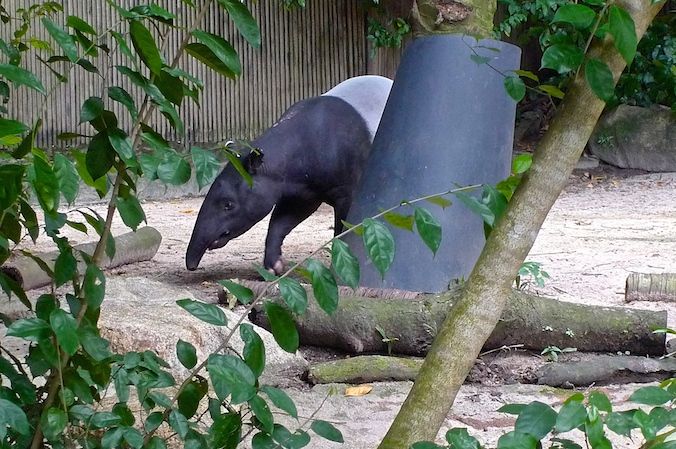
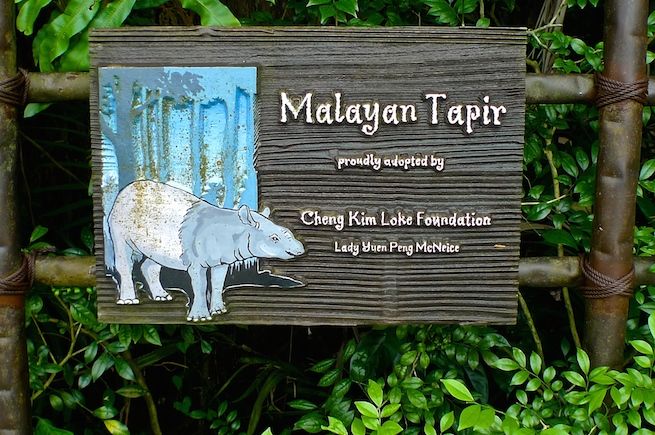
The upper lip and nose of a tapir are fused to form the trunk. It is a powerful organ for smell and tapirs use them to forage for food. The trunk serves as fingers to grasp leaves and guide them into their mouth. It is also used to probe unfamiliar objects.
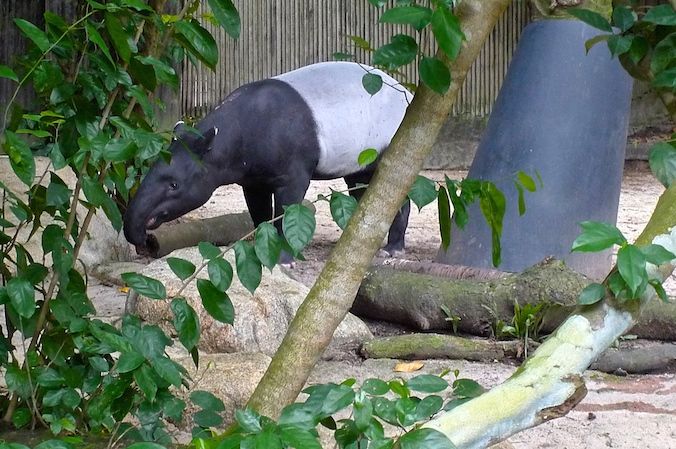
Here's an orang asli folklore about how the tapir got its black and white color.
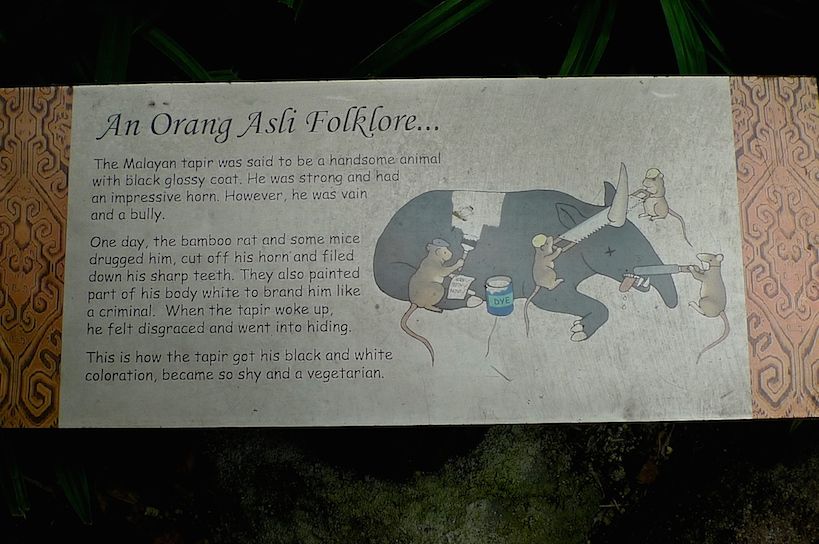
Next, we saw a gibbon monkey. Or is it an ape? I am not too sure.
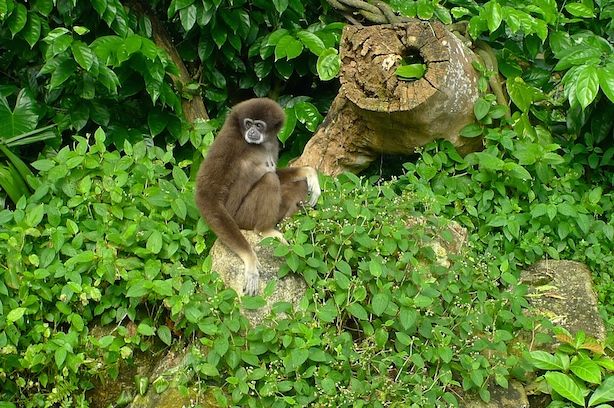
It was a good thing that the gibbon sat there for some time so I could take a photo of it.
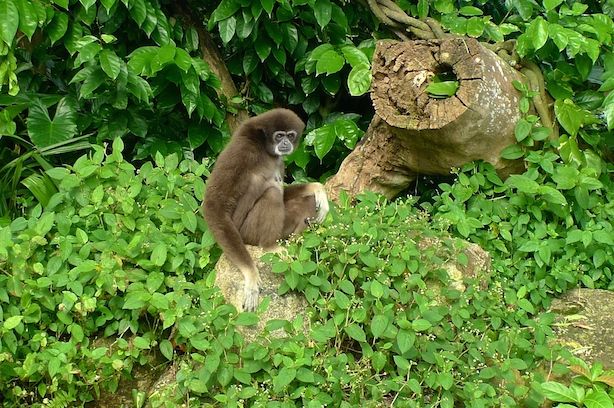
Soon, we reached the Antelopes area.

An antelope grabbing at some wooden twigs and branches hanging from a tree.
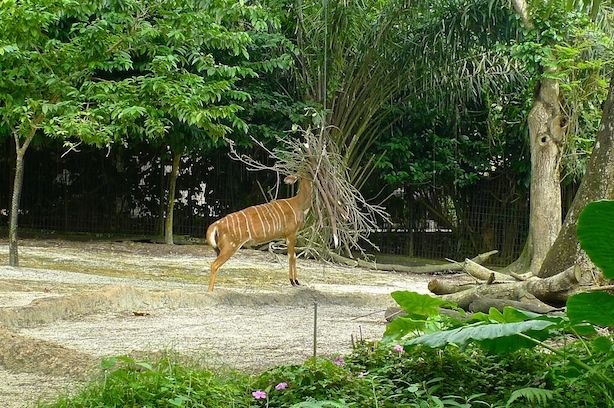
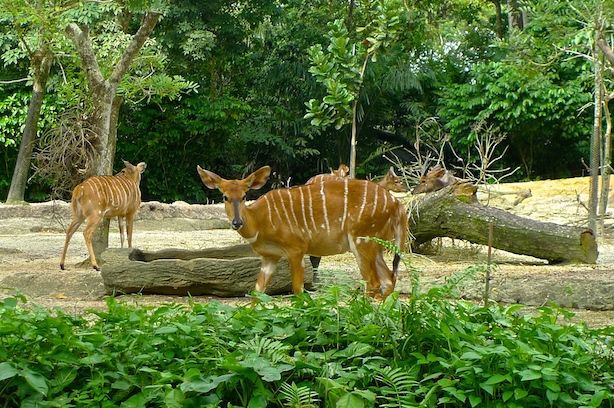
We came across a cheetah behind glass. It kept walking past the glass window a few times as if observing us!
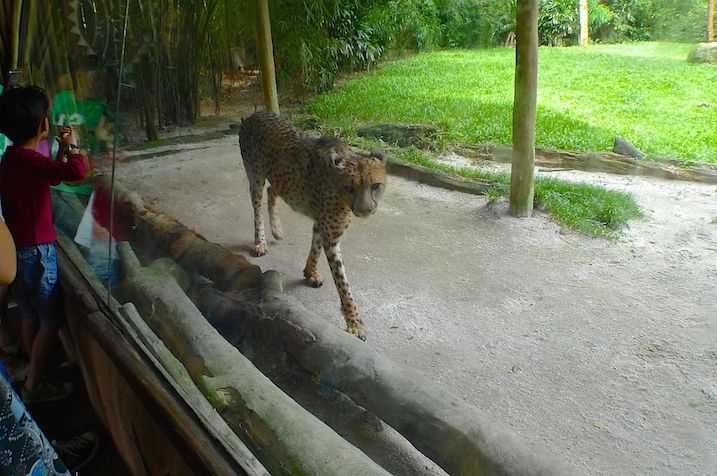
Next, the zebras!
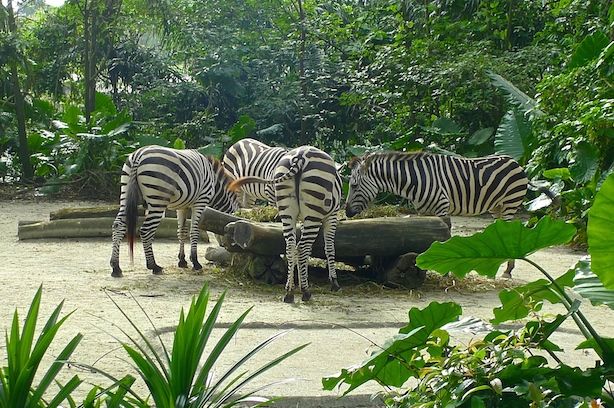
Did you know that you can tell the different zebra species by their stripe patterns? Within a herd, stripe patterns help in the recognition of individual members. It is believed zebra stripes also serve to confuse predators as the herd speeds off.

Cute meerkats coming out from inside the tree trunk.
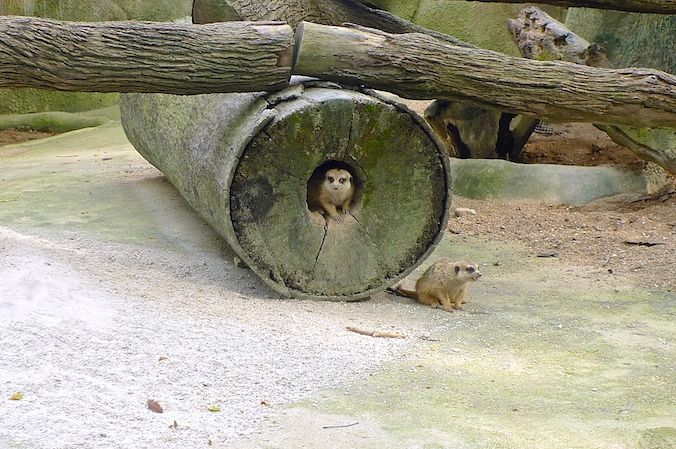
Did you know that male meerkats take turn to perform sentry duty? With keen eyesight, they can spot a bird of prey even if the enemies are just specks in the sky. Pack members dart into the burrows when the sentry give out loud warning cries. Sentry duty lasts for about an hour for each animal.
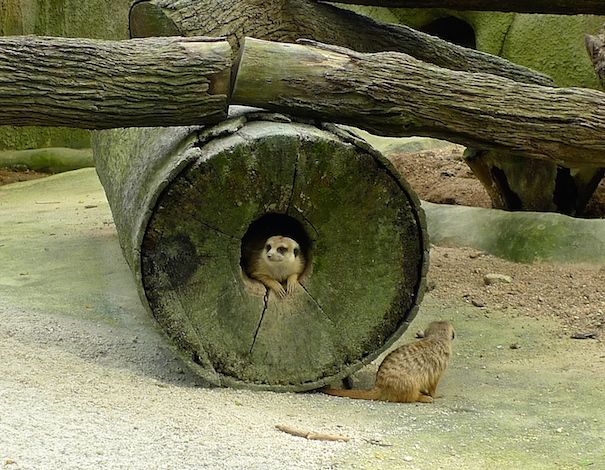
Male and female adults act as babysitters when nursing meerkat leaves the den to forage. Meerkats feed on insects, small mammals, lizards, and fruits. By the way, their diet also include venomous snakes and scorpions!
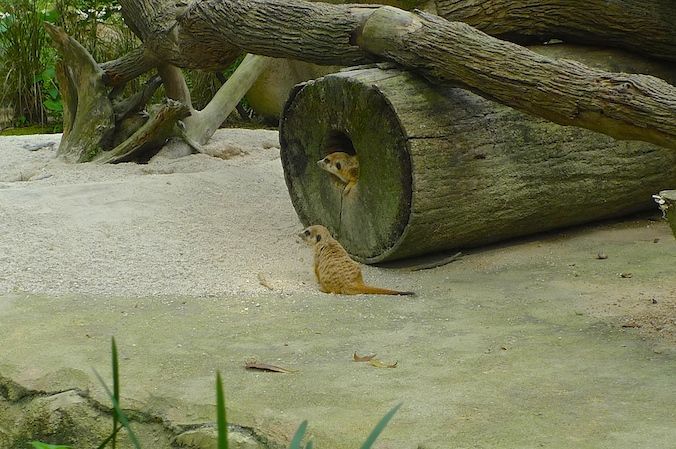
Long-neck giraffes towering above us!
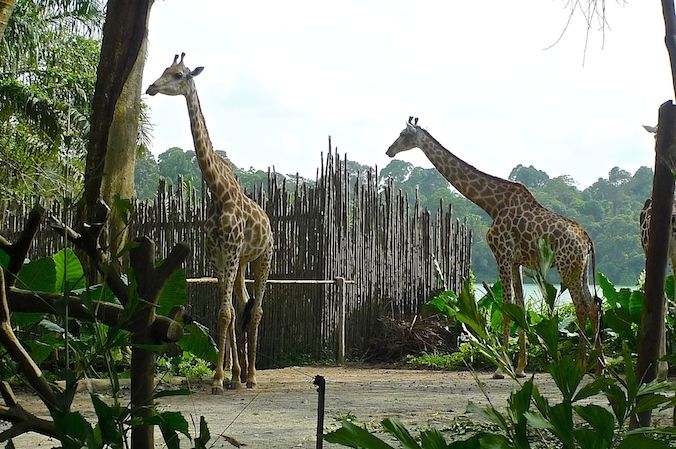
More photos of the giraffes.

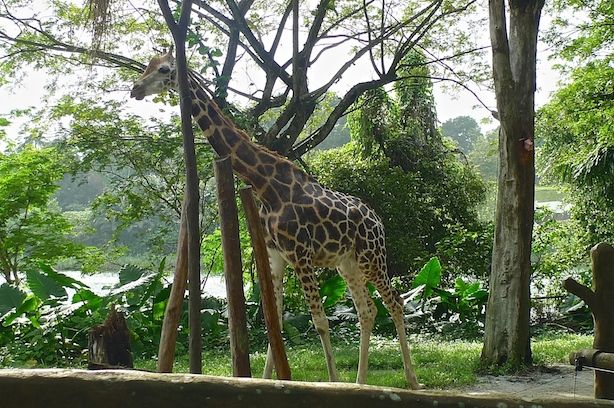
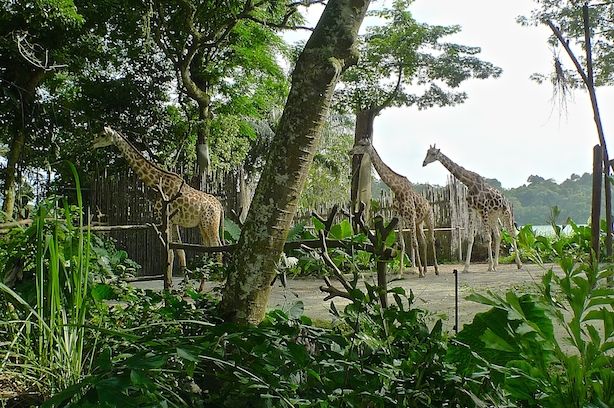
We passed by the lions' home. But we only saw one lion and it was resting.
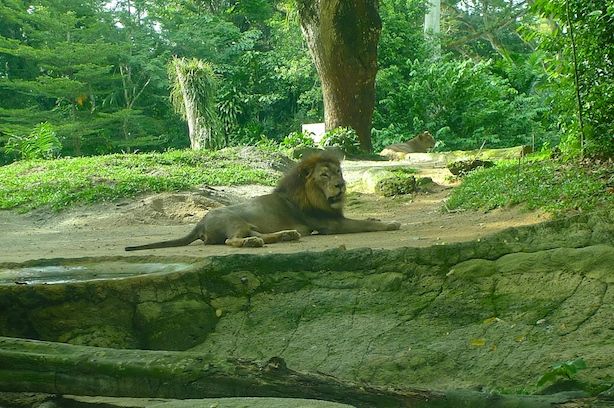
Further ahead, we reached the tropical crops garden.
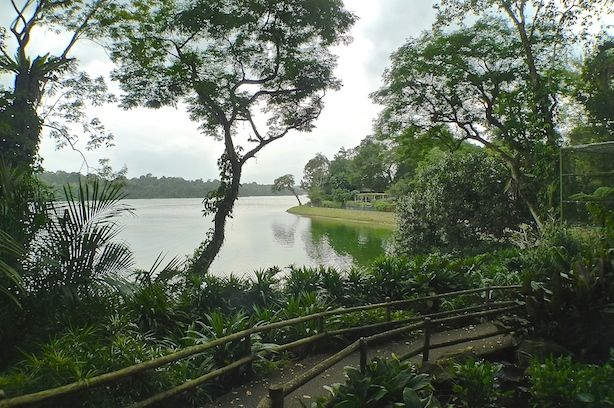
No animals here, just plants and crops. This is pumpkin plant.

A view of the crops by the river.
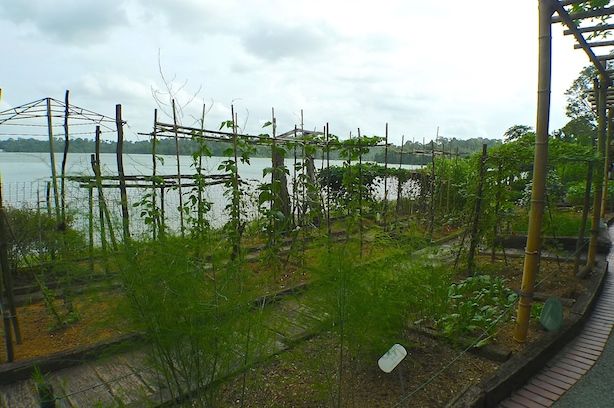
Soybean plants.
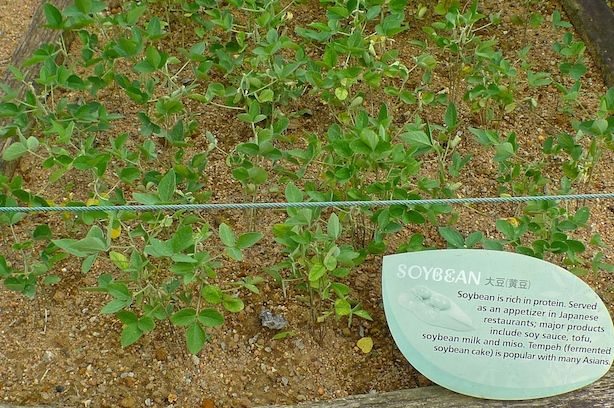
Lots of orchids here!

Beautiful orchids!
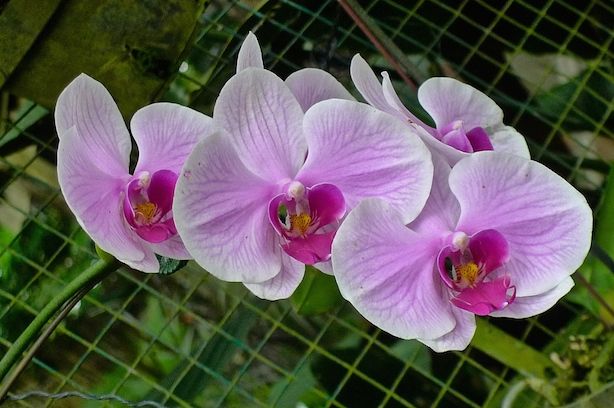
There were many more plants but I did not take pictures of them. Next, we reached the chimpanzee area.
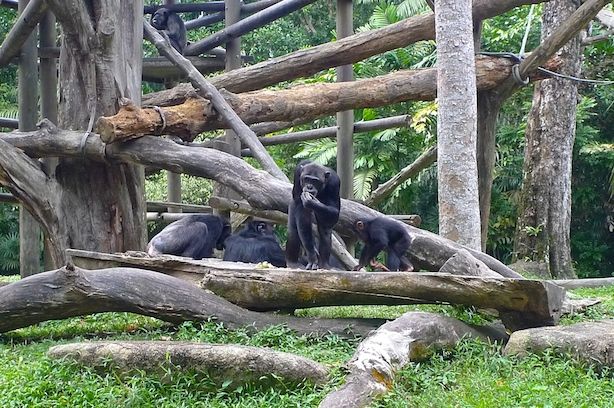
The chimpanzees were quite active and I took a few photos of them.
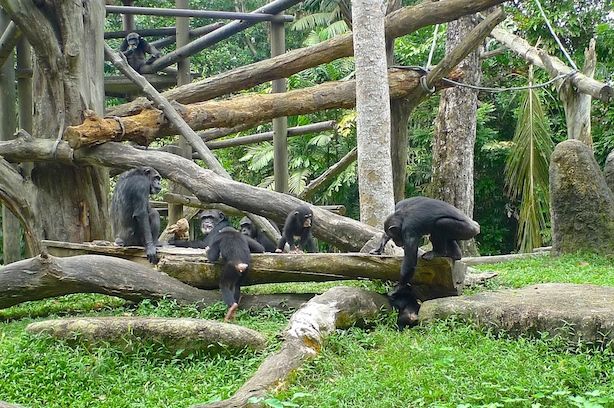
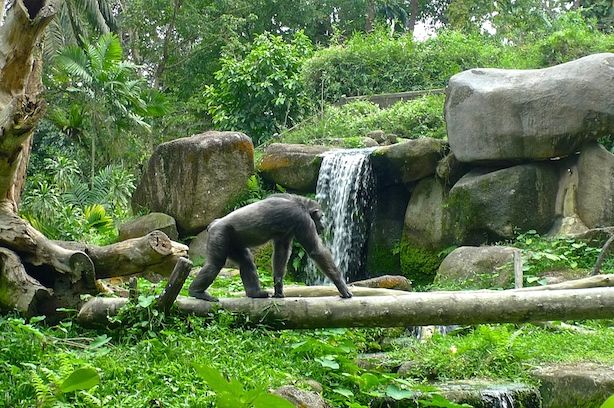
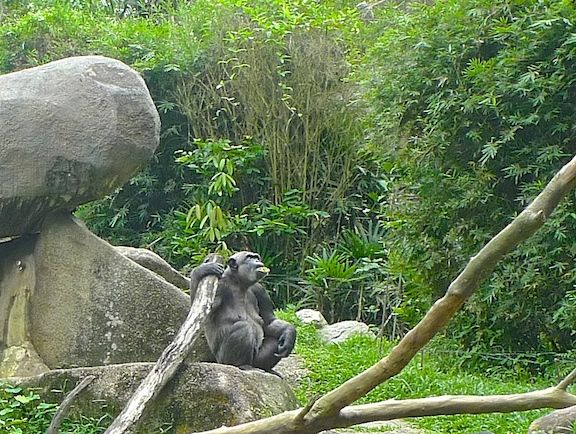

Next, we reached the Sungai Buaya area. The crocodiles here were really huge!
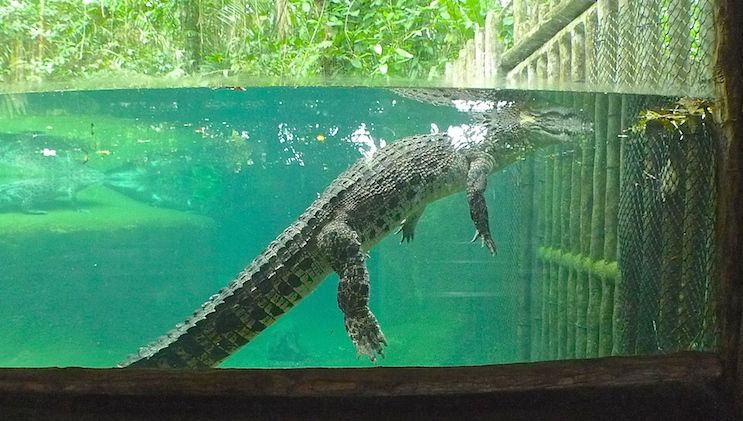
Not sure how to differentiate between crocodiles, alligators and false gharial? This information below may help!

Look at the giant tail! It's enough to send shivers down my spine.
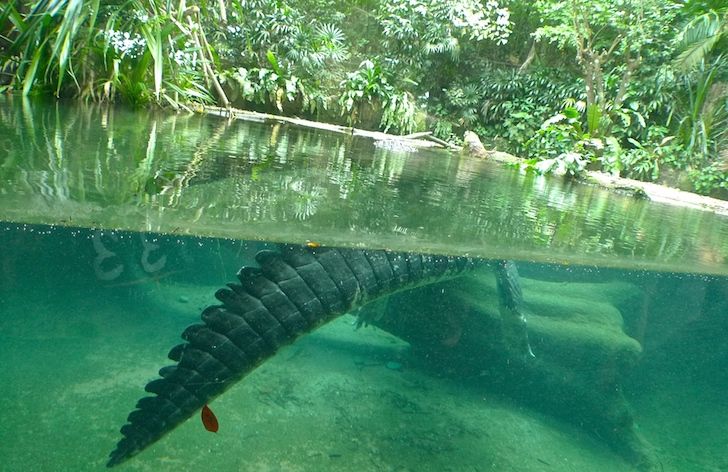
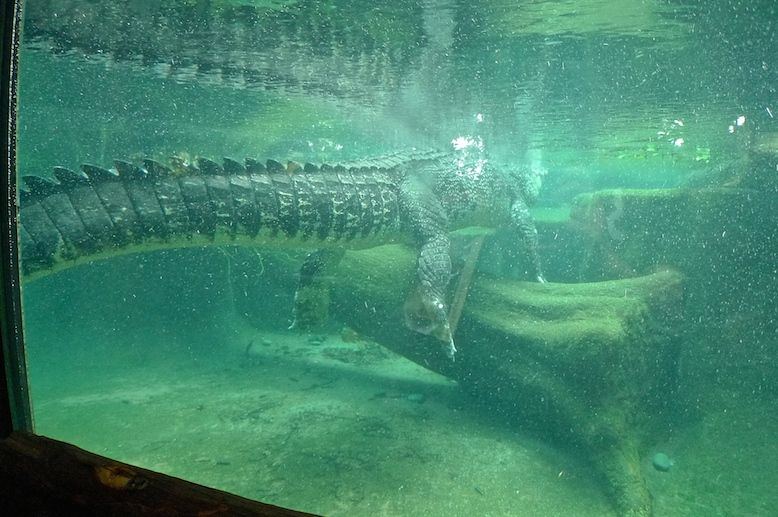
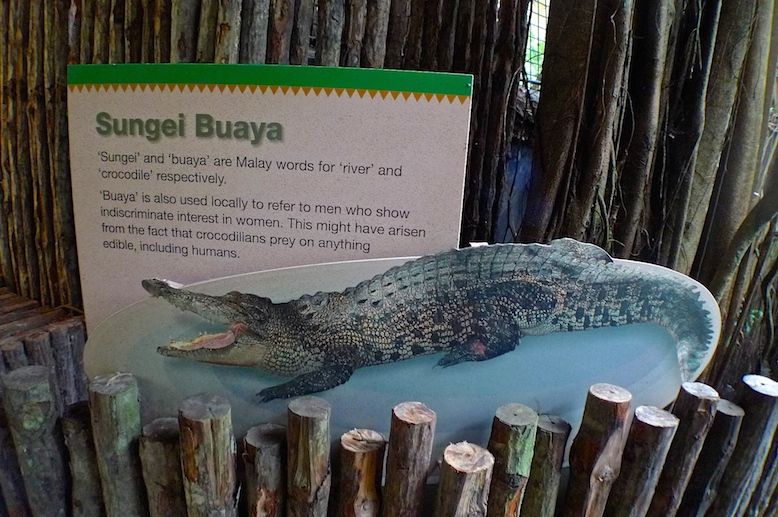
My favourite place in Singapore Zoo is this - Garden With A View!
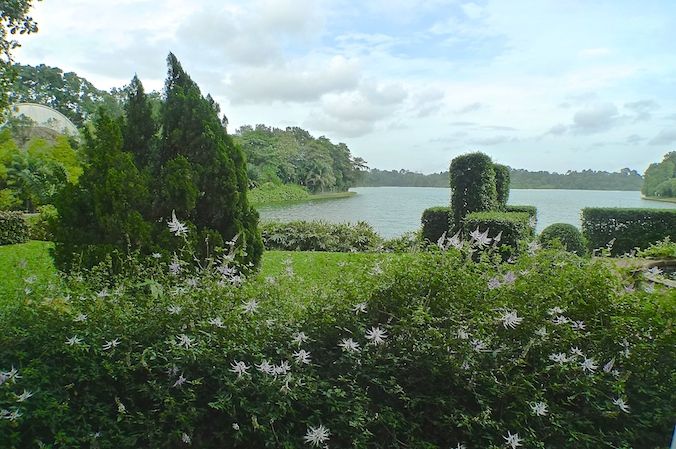
It appears that the Garden With A View was specially created to provide a contrast to the rest of the Zoo grounds. Influenced by the French Renaissance style, the garden offers a panoramic view of the Seletar Reservoir.
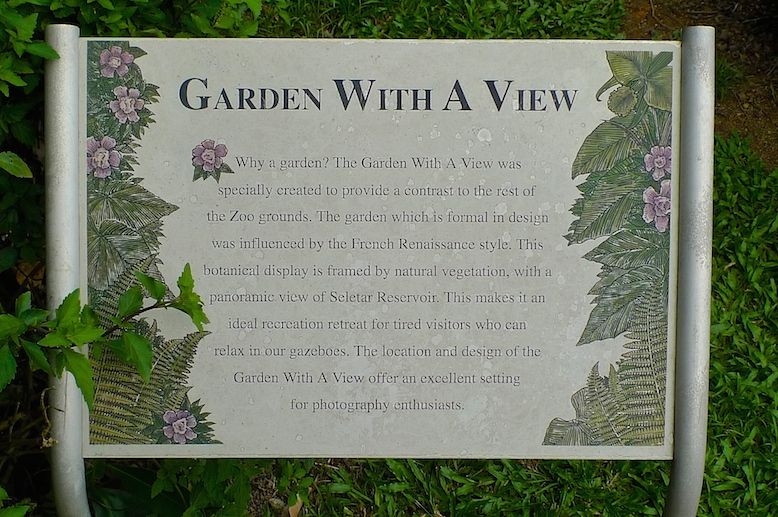
I love this place! So beautiful, so refreshing and so relaxing!
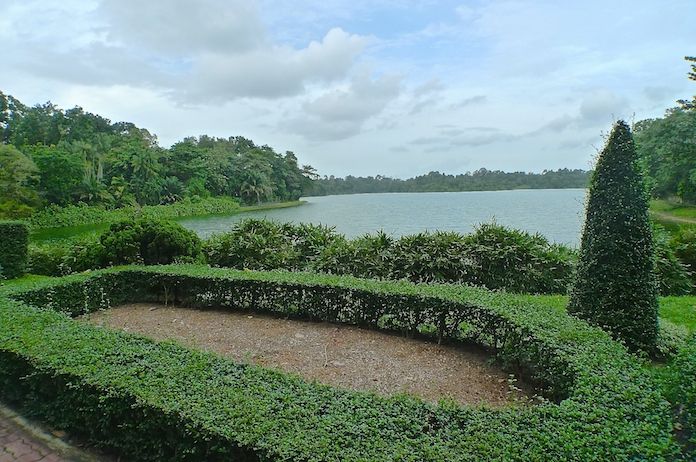
There's also a water fountain here.
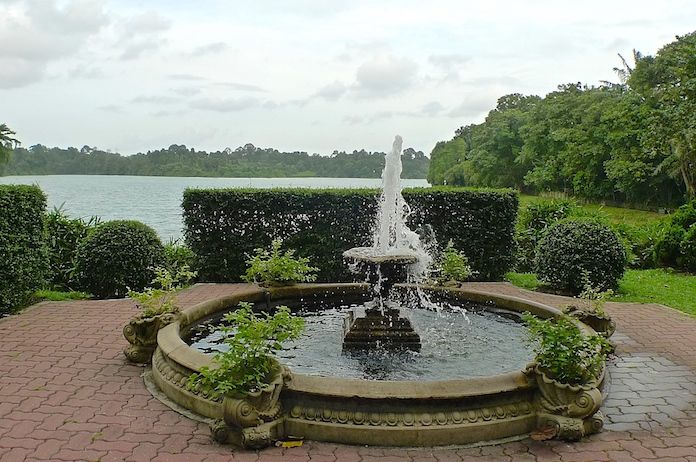
Although I noticed something has changed since my last visit back in 2004. Maybe they included a few rides or playthings for kids, I'm not too sure.
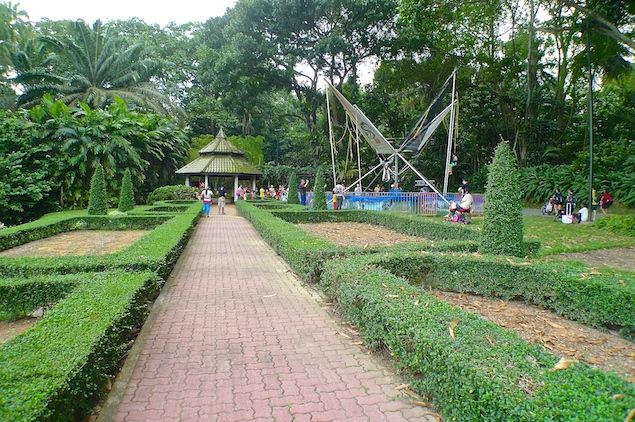
Here you can also find a 1.5 tonne bronze sculpture of Ah Meng, the famous orang utan who passed away in February 2008. It was erected close to her grave to commemorate her efforts and contribution on the plights of the orang utans.
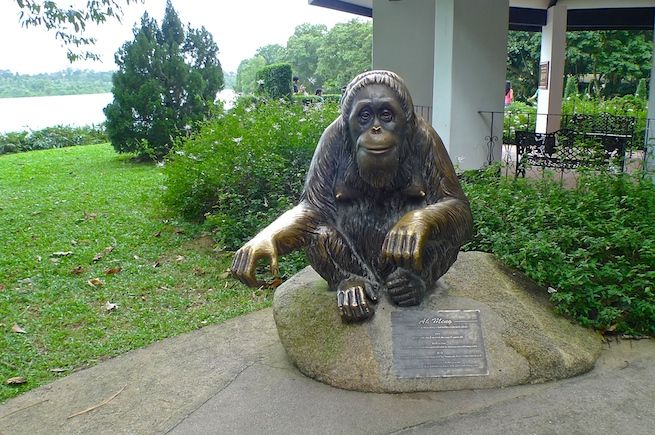
As durian was her favourite food, a D24 durian tree was also planted alongside her grave.
After the Garden With A View, we visited the African Penguins.
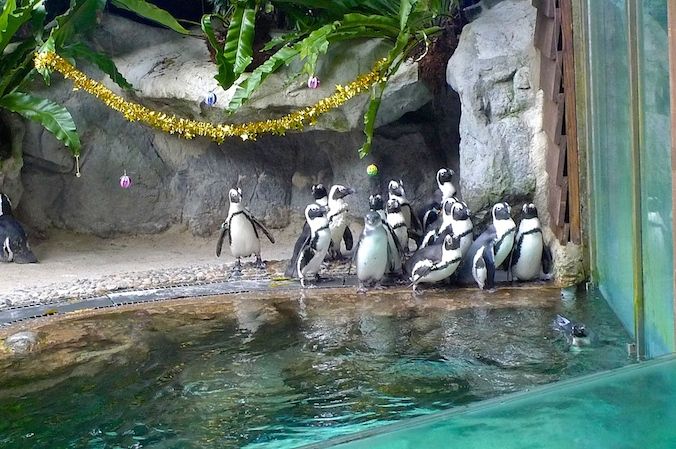
And that's about it. After spending more than 3 hours at Singapore Zoo, it's time to leave. There are many more animals I did not cover in this blog post, but I shall leave that to you to discover for yourself!
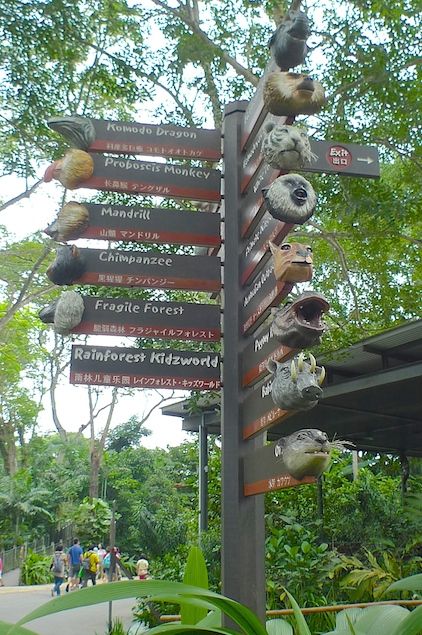
It was already almost 7pm when we reached the bus stop opposite Kranji MRT station. We had to take a bus back to Johor Bahru. We finally reached CIQ in Johor Bahru around 8pm, just in time for dinner.

Directions To Singapore Zoo : At Woodlands MRT Station, follow the Bus Interchange sign. Go down escalator to Bus Interchange Station and search for Berth 7. Queue up at the Bus 926 lane and take bus 926 directly to Singapore Zoo.

















































